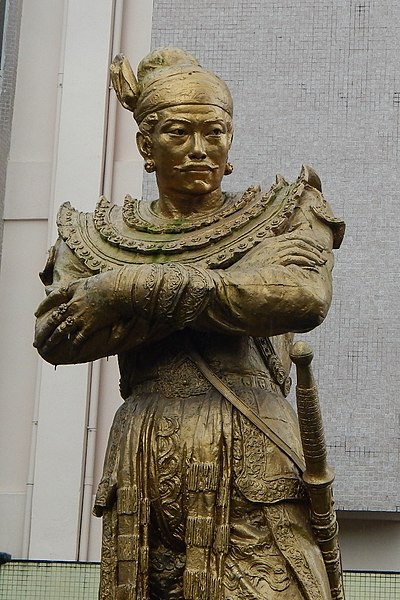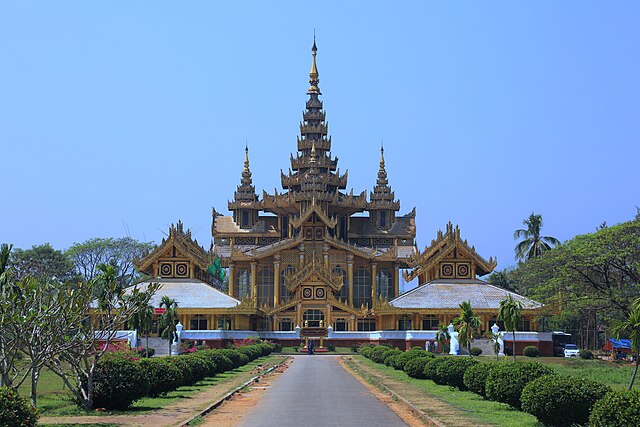Bayinnaung Kyawhtin Nawrahta was king of the Toungoo Dynasty of Myanmar from 1550 to 1581. During his 31-year reign, which has been called the "greatest explosion of human energy ever seen in Burma", Bayinnaung assembled the largest empire in the history of Southeast Asia, which included much of modern-day Myanmar, the Chinese Shan states, Lan Na, Lan Xang, Manipur and Siam.
Statue of Bayinnaung in front of the National Museum of Myanmar
King Mekuti represented as Yun Bayin, Burmese nat
Surviving Khmer bronze statue of the 30 statues taken from Ayutthaya in 1564, taken to Mrauk-U in 1600 by the Arakanese, and to Amarapura in 1785 by Thado Minsaw.
Kanbawzathadi Palace
The Toungoo dynasty, and also known as the Restored Toungoo dynasty, was the ruling dynasty of Burma (Myanmar) from the mid-16th century to 1752. Its early kings Tabinshwehti and Bayinnaung succeeded in reunifying the territories of the Pagan Kingdom for the first time since 1287 and in incorporating the Shan States for the first time, in addition to including Manipur, Chinese Shan States, Siam and Lan Xang. At its peak, the Toungoo Empire was the largest and strongest empire in Southeast Asia. However, it collapsed in the 18 years following Bayinnaung's death in 1581.
The King of Toungoo in Pegu receives an envoy (17th century)





